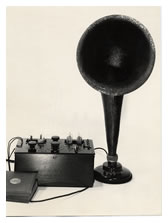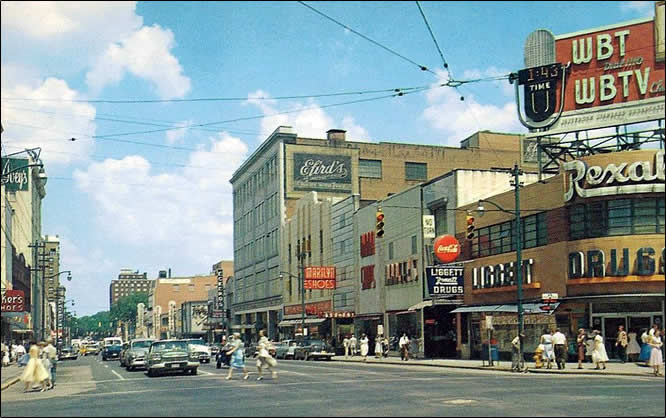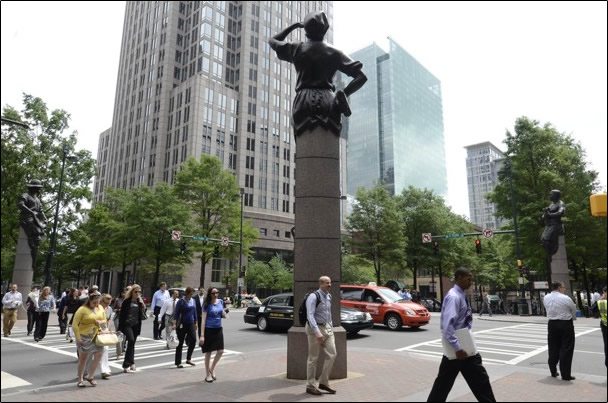
In the early 1920s your great-grandparents may have listened to WBT on a rig like this. Radio was still a hobby mainly for the curious and technically adept.


In the early 1920s your great-grandparents may have listened to WBT on a rig like this. Radio was still a hobby mainly for the curious and technically adept.

The Square
Back when women still wore dresses in public, and town centers were the place you shopped, most cities had a "square." This was ours, at the intersection of Tryon and Trade Streets, where, it's told, two Indian trails crossed in days of yore. Efirds Department store, long defunct, was known for its wooden escalator, and your cash payment for an item (few credit cards then) was sent zipping up and across the ceiling in a little metal box on tiny tracks, to the cashier's office. Drug and department stores had lunch counters (white folks only, please), and a "meter maid" would mark a tire of your street-parked DeSoto. On her next round, if your car was still there, you'd get a ticket. In shoe stores, a real live, knowledgeable person would carefully measure the length and width of your personal feet, retrieve the appropriate style and size from the storeroom, and gently slip on your new leather-soled oxfords—and tie them!
There were specialty stores for neckties and shirts, and shops for gentlemen to have their hats blocked. There were even movie theaters (one screen each) spaced conveniently along the thoroughfare where first-run movies were shown.
Any particular employee in one of these establishments was most likely an adult, made a liveable wage, and—provided he or she was competent and morally upright—might very well remain with that company for all his working life.
* * *
Stand near the same spot today and this is what you'd encounter. No department stores, or theaters, or a giant BT sign. Housed in many of these impressive skyscrapers are the headquarters of multi-national financial corporations, from which your home foreclosure notice will be mailed.
